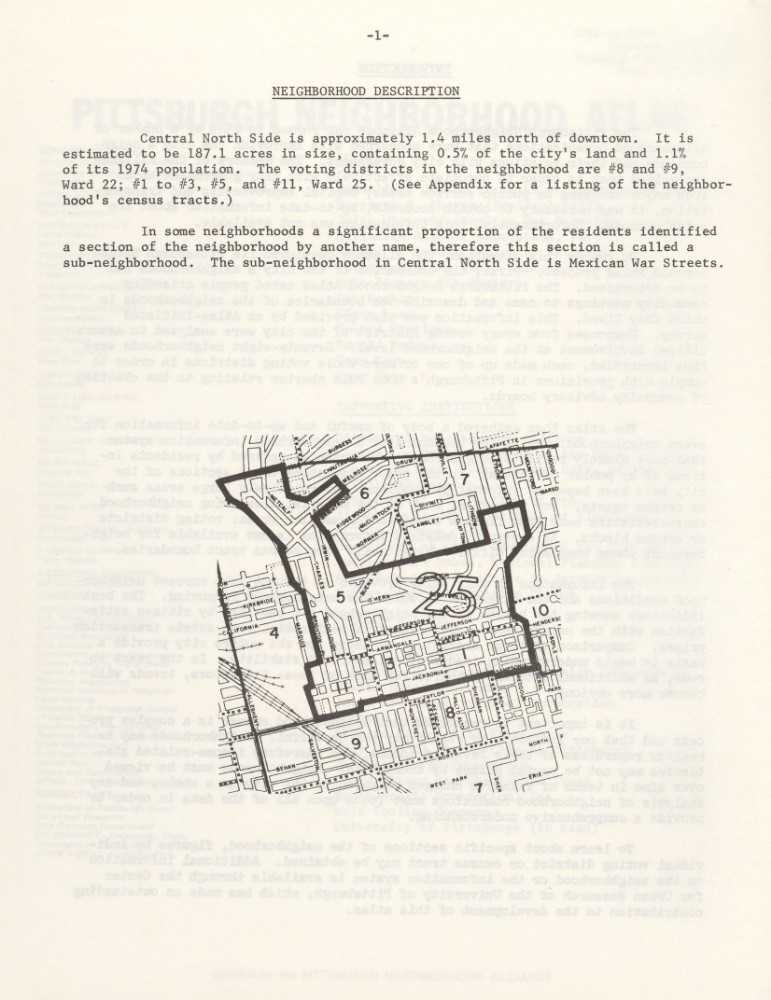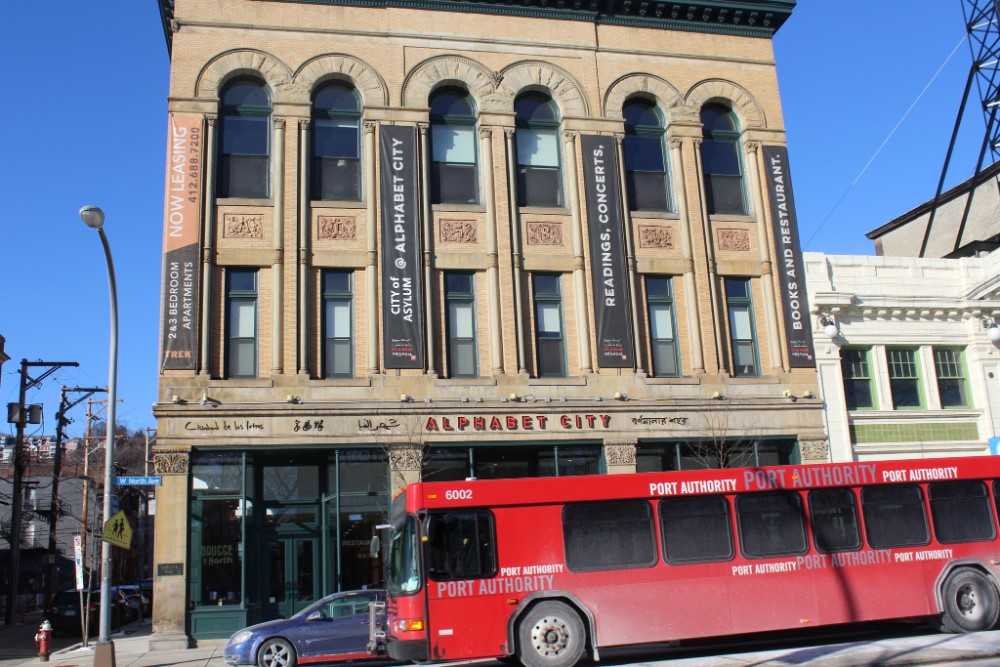Secret Pittsburgh
Finding City of Asylum
By Ny'Ara Willis
On the North Side of Pittsburgh, Pennsylvania at 40 W North Avenue rests a seemingly ordinary office building with a red door and glass windows on the first floor. That building is City of Asylum / Alphabet City. City of Asylum (COA) is a grassroots organization that primarily serves as a support system for exiled writers from around the world. Since 2004, founders Diane Samuels and Henry Reese have been hosting endangered writers for two year residencies that include housing, health insurance, English lessons, and legal aid if the writers need it. COA doesn’t only serve these writers, they also serve their community. Alphabet City is the bookstore that is housed as the center of City of Asylum’s office buildings, and there are multiple other buildings and spaces in use by COA as a means of expanding their impact. In addition to their bookstore, they own a reading garden that’s open to the public at all times, three houses that they allow their resident writers to live in, and many more projects in the works to spread COA buildings all over the neighborhood to make writing accessible to all. City of Asylum’s main goal is to protect freedom of speech and freedom of press, and allowing all people the right to express themselves.
So why choose the North Side rather than Downtown or any other part of Pittsburgh? Outside of the fact that the founders lived on the North Side, the link between the history of the area and the current work of COA may be more related than even the founders know. I decided to explore the history of the Central North Side of Pittsburgh, and how City of Asylum came to be a part of it, and how it continues to spread across it.
Pittsburgh, Pennsylvania is a city with a rich history. In 1740, the first inhabitant settled at the bottom of Monument Hill, which is where Allegheny (current day Pittsburgh) emerged as a city. Next door was a city called The North Side. Allegheny was growing through surrounding communities being annexed. Troy Hill, the East Street Valley, and Spring Valley became a part of Allegheny in 1868, Manchester the following year in 1869, and the next year in 1870, Woods Run was also now a part of Allegheny City. It was not until 1907 that The North Side City annexed and became a part of Allegheny City. Allegheny was a primarily industrial city, with steel mills, textiles, cotton factories, etc driving the economy after the shift from farming. The people of the city were a melting pot, with immigrants from England, Scotland, Ireland, Germany, Croatia, the Czech Republic, and many other European countries came to the Allegheny area to look for jobs and economic growth. The black population of Allegheny emerged later, likely for some of the same reasons, and settling in what later became known as the North Side of Pittsburgh. (Pittsburgh Neighborhood Alliance, 1977)
The North Side in particular has an interesting history. The Pittsburgh Neighborhood Alliance compiled An Atlas of the Central North Side of Pittsburgh 1977 and it can be found via the Historic Pittsburgh online archive. The introduction to the atlas explains what the Pittsburgh Neighborhood Alliance was created to do, and the reason behind their creation of the atlas. “The Pittsburgh Neighborhood Alliance was formed in 1969 by a number of neighborhood organizations that were concerned with improving the city’s neighborhoods and their relations with city government” (Pittsburgh Neighborhood Alliance, 1977) In order for them to spark any change, they first had to define where the neighborhoods were. This atlas is a part of a series that outlines all of the Pittsburgh neighborhoods of the time, and their physical boundaries are the first things featured. Figure 1 is the map of the Central North Side, but more specifically the Mexican War Streets sub-neighborhood. If you look on North Avenue, in between the cross streets Reddour St. and Federal St. you will find the rectangular building that today is City of Asylum.Though the history of the building was more difficult to find, it's more important to consider the culture of the neighborhood to see how City of Asylum is connected to it, and the international community simultaneously.
Pittsburgh is a city with a strong artistic background. There have been many incredible artists that came out of Pittsburgh, and some specifically from the North Side. One artist in particular from the North Side is Oliver Lake, a black saxophonist in his 70's who is very passionate about the culture and future of the North Side. In one project that he did with the help and support of City of Asylum is his Stoop Is A Verb show in September 2018. For this free jazz, spoken word, and dance show, Lake went around the 15 neighborhoods all classified as the “Northside” and interviewed residents about the issues they are dealing with. People of the city had a lot to say about gentrification, crime, diversity, and just day to day life. Lake then pulled direct quotes from those people and composed them into songs set to his band playing jazz music, and added the twist of a visual component: dancers. It may seem odd that City of Asylum hosted such a show, considering they focus a lot on writers, but COA likes to celebrate freedom of expression and art in many ways. Aside from occasionally hosting local artists and writers to perform and speak at their free events, they also looked to people in the neighborhood to paint their Jazz house, which happened to be Oliver Lake.
City of Asylum could easily focus solely on helping and participating in the international community they are a part of, but instead they want to be active members in their community, and involve the North Side in their work. They host public, free events for the community for people to express and celebrate their freedoms of expression. They also have dedicated part of their physical growth into community involvement and outreach: They already have a garden they created. Though City of Asylum started out as just a hope, it has grown significantly 15 years later. The North Side may be facing negative impacts of people developing the area, but COA has been and will continue to positively spread throughout the community.
Works Cited:
“An Atlas of the Central North Side Neighborhood of Pittsburgh 1977.” Historic Pittsburgh, Pittsburgh Neighborhood Alliance, historicpittsburgh.org/islandora/object/pitt:31735070288745/from_search/083c2a34cf913a2f1c08ee850c85ae25-4#page/12/mode/2up.

